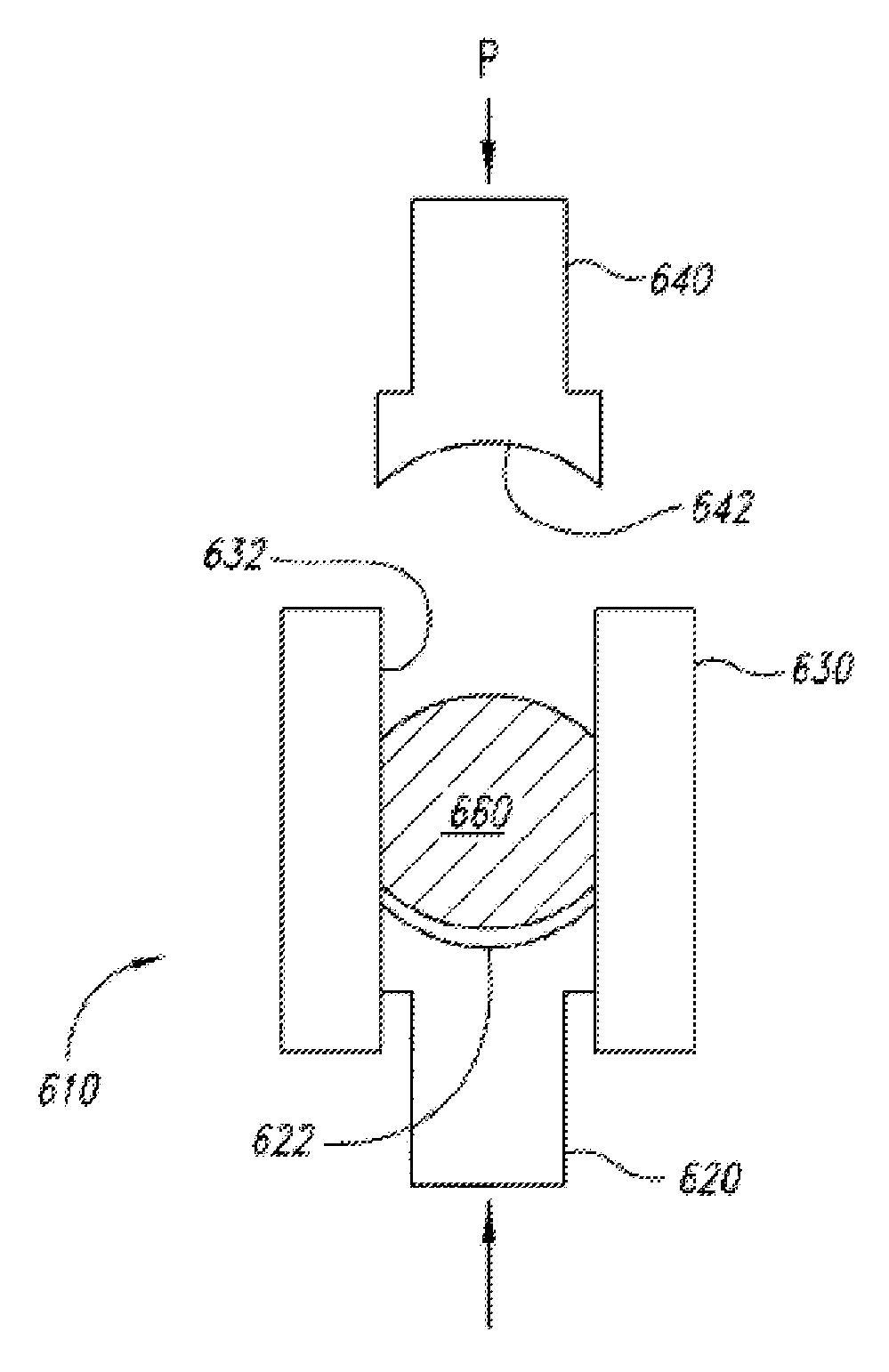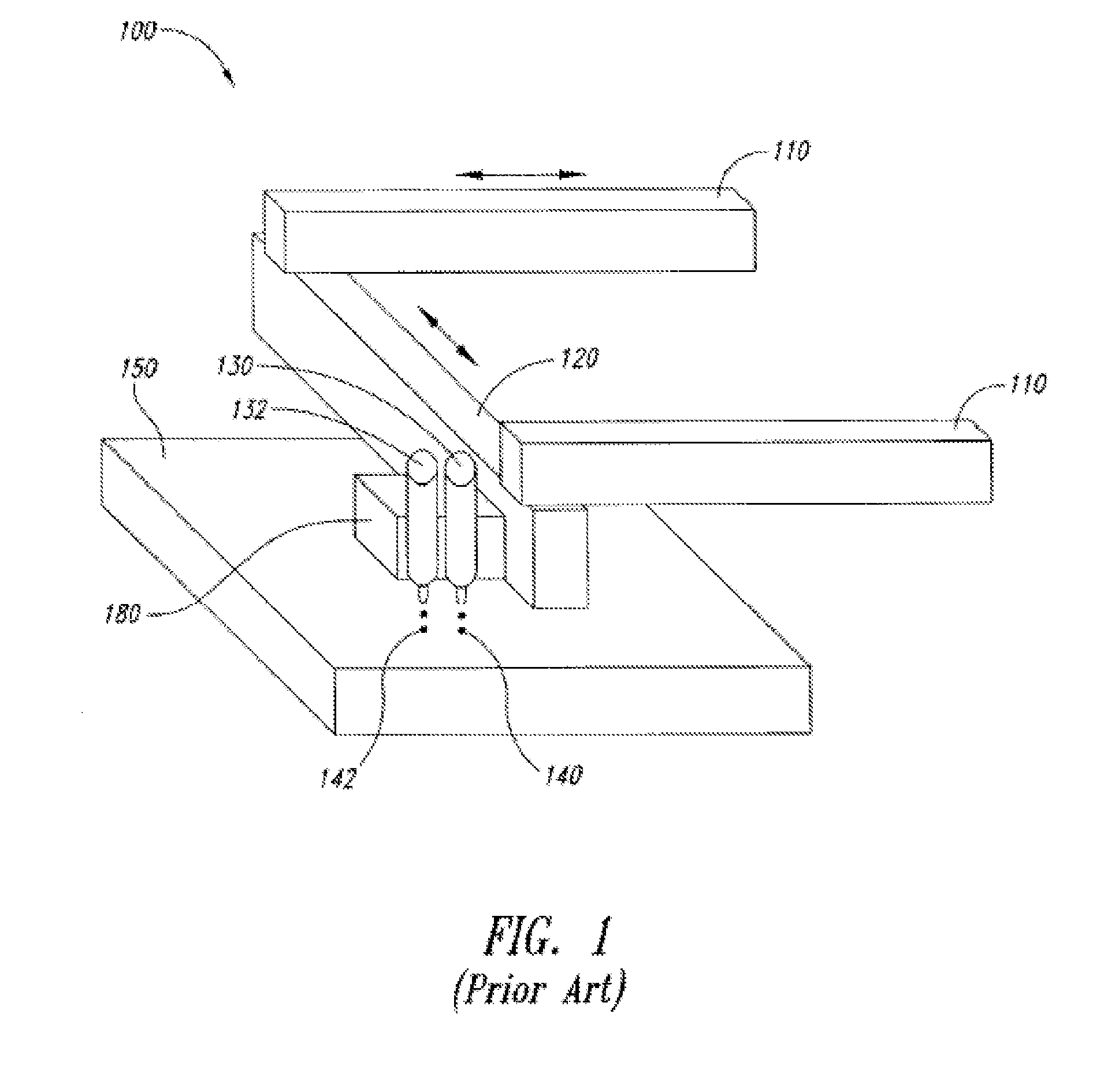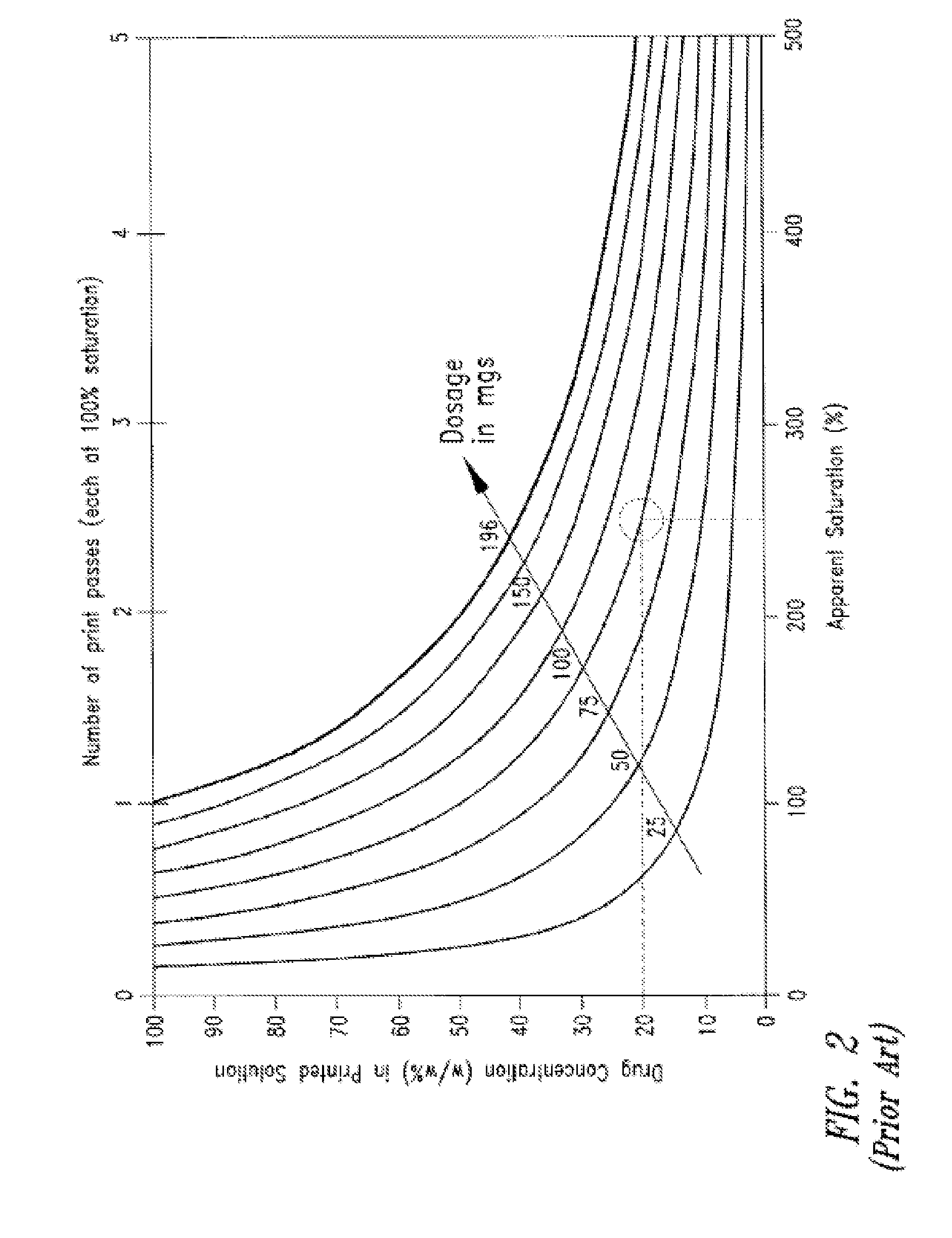System and method for uniaxial compression of an article, such as a three dimensionally printed dosage form
a three-dimensional printed, article technology, applied in the direction of additive manufacturing processes, pharmaceutical product form changes, other domestic articles, etc., can solve the problems of unfavorable design, unfavorable design, and unacceptably rough surface of 3dp printed parts compared to traditionally manufactured pressed tablets
- Summary
- Abstract
- Description
- Claims
- Application Information
AI Technical Summary
Benefits of technology
Problems solved by technology
Method used
Image
Examples
example 1
Improved External Surface Smoothness of 3DP ODF Using Uniaxial Compression
[0047]This Example illustrates the external surface of a three-dimensionally printed dosage form that has been uniaxially compressed after being initially produced by 3D printing. Articles were printed using a three-dimensional printing system as already described. The pharmaceutical excipient powder, binders and internal printing structure and printhead are further described herein.
[0048]After the 3DP operation, which left rough surfaces containing steps corresponding to the thicknesses of the powder layers used in the 3DP printing process, some of the 3DP printed articles were uniaxially pressed at a pressure of 15,000 psi. This pressing was performed using a stainless steel tablet die with an internal diameter of 11 mm and custom plungers with concave surfaces to match the intended contour of the tablet caps, having a radius of curvature of 1.32 cm resembling what is shown in FIG. 6.
[0049]The shape of the u...
example 2
Integrity of Internal Structure of 3DP ODF Maintained in View of Uniaxial Compression
[0058]Three-dimensional printing provides the ability to create internal structure and compositional variation in dosage forms. Accordingly, this Example is intended to illustrate how the internal structure of a 3D printed dosage form can be maintained while a dosage form undergoes uniaxial compression. The tablets in this Example were the same as those in Example 1. The outer shape of these dosage forms was circular-cylindrical with curved end caps.
[0059]As far as internal composition, these dosage forms comprised an inner API-containing region that, in the illustrated cross-section, had a rectangular cross-section and its full three-dimensional shape was a circular cylinder. This circular-cylindrical API-containing region was completely surrounded by an outer non-API-containing region that occupied the remainder of the dosage form not occupied by the inner region. The articles were constructed in ...
example 3
Uniform Initial Void Fraction to Minimize Impact of Uniaxial Compression on Internal Architecture
[0074]In the preceding example, during the compression there was some motion of the interface or boundary between the two regions in a direction perpendicular to the axis of compression, in this case, radial motion. Such motion can be estimated during the design stage of a dosage form and the dosage form can be designed so as to compensate for such expected motion of the interface or boundary during compression. In the previous example, the radially outward motion of the API / non-API interface occurred because the as-printed API-containing region had relatively less void, and the as-printed outer region had relatively more void, even though both ended up being essentially fully dense after compression. Therefore, more removal of void volume had to occur in the outer region than in the inner region, and so material squeezed and moved out from the more-dense region into the less-dense regio...
PUM
| Property | Measurement | Unit |
|---|---|---|
| thickness | aaaaa | aaaaa |
| thickness | aaaaa | aaaaa |
| diameter | aaaaa | aaaaa |
Abstract
Description
Claims
Application Information
 Login to View More
Login to View More - R&D
- Intellectual Property
- Life Sciences
- Materials
- Tech Scout
- Unparalleled Data Quality
- Higher Quality Content
- 60% Fewer Hallucinations
Browse by: Latest US Patents, China's latest patents, Technical Efficacy Thesaurus, Application Domain, Technology Topic, Popular Technical Reports.
© 2025 PatSnap. All rights reserved.Legal|Privacy policy|Modern Slavery Act Transparency Statement|Sitemap|About US| Contact US: help@patsnap.com



